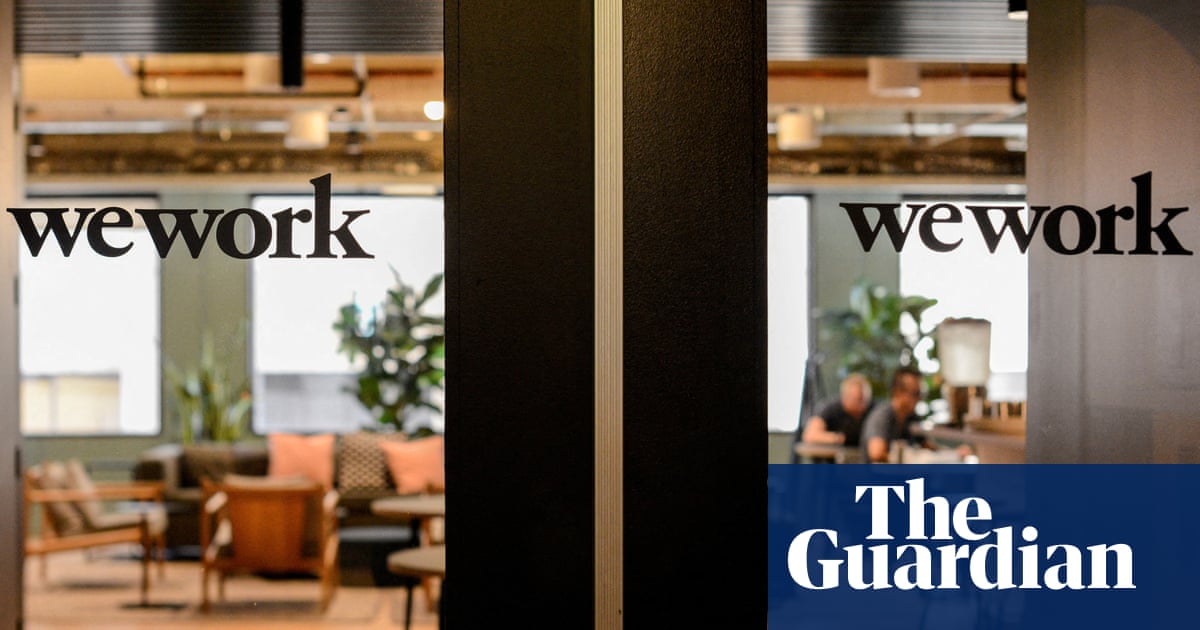
WeWork, the troubled office share behemoth, was once valued at $47bn. On Friday, the company was forced to combine 40 of its shares into one in an effort to keep its stock price above $1 and avoid being delisted from the New York stock exchange.
The dramatic rise and fall of WeWork has been well documented, but as the company warned there was “substantial doubt” it would stay in business, experts suggest the impact for the already troubled commercial property sector could be dire.
In 2019, WeWork was the largest commercial leaseholder in New York and London. Despite efforts to shed leases, it still has contracts on about 6.4m sq ft in 70 buildings in New York alone, according to Crains. In theory, a WeWork bankruptcy could now dump those back on to a market struggling with record low occupancy and facing difficulties refinancing debt on properties as interest rates rise.
The US office vacancy rate rose to an all-time-high of 13.1% at the end of the last quarter, according to National Association of Realtors data. In Manhattan, vacancy rates are about 22% the highest recorded since market tracking began in 1984, according to Cushman & Wakefield. Some 128 buildings list availability of more than 52m sq feet, or more than 40 skyscrapers the size of the Chrysler Building.
If WeWork is placed in chapter 11 bankruptcy, it could postpone payments on old debt and back-rent, and have the right to terminate its leases – and that would hit landlords.
Anthony Sabino, a bankruptcy expert at law firm Sabino & Sabino and a law professor at St John’s University’s Tobin College of Business, said a WeWork collapse would make a bad situation worse – but he said crises also provide opportunities.
“Covid knocked the foundations out from commercial real estate in major cities, and while there is something of a comeback, it has not returned to pre-Covid levels,” Sabino said. “So it would be a troubling and damaging situation if WeWork goes into the tank: that would knock back commercial real estate in New York for a bit, but there will also be opportunities for more adventurous actors in the sector.”
He added: “There is a move among business leadership to get people back to the office. Someone will be there to pick up the slack.”
Still, adding WeWork-leased properties to the vacancy list would only compound commercial real estate’s distress, at a time when many are wondering whether we need to fundamentally rethink the use of office buildings in the post-Covid, work-from-home era.
Last week, New York City announced a plan to convert vacant offices into as many as 20,000 new housing units by helping developers cut through red tape and rezone a section of midtown below Times Square for residential use.
But, as Sabino points out, the commercial sector distress is also attracting Wall Street firms raising billions of dollars to target distressed assets. In New York, residential rents have increased by about 25% since the pandemic and developers are converting more empty offices into apartments.
“It’s like what Baron Rothschild said 300 years ago – ‘the time to buy is when there’s blood in the streets,’” he said. “Real estate has been an investment since the days of the pyramids. There’s always going to be someone out there saying, ‘Let’s make a deal.’”












